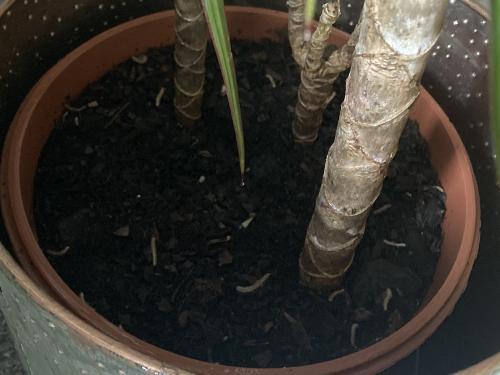Hello,
I'm really hoping somebody can help me!
I have had my dragon tree for about 7 months. It was doing well until 2 weeks ago when lots of leaves started to drop. It hadn't been watered for 2 weeks so I gave it some water and moved it further away from the radiator as I thought it might be too hot. I started misting it more regularly as well. I hadn't seen any real improvement when I went to water it this morning, but when I did I saw a lot of caterpillar type bugs in the soil. Please can anyone give me any information at all on what they are and how to remove them!?
This is only my second house plant and I'm worried I am not caring for it properly 😞
Thank you in advance!!
Ps I live in a flat with no garden and I would just prefer not to have bugs inside, even if they turn out to be harmless.

